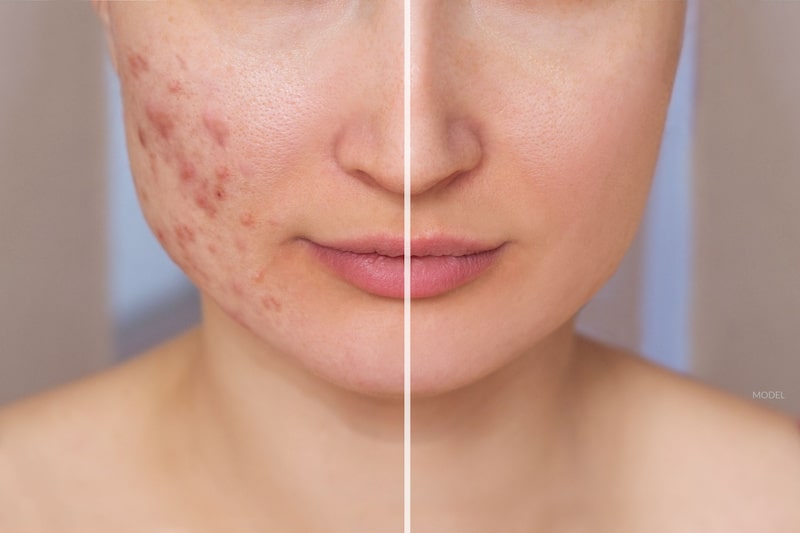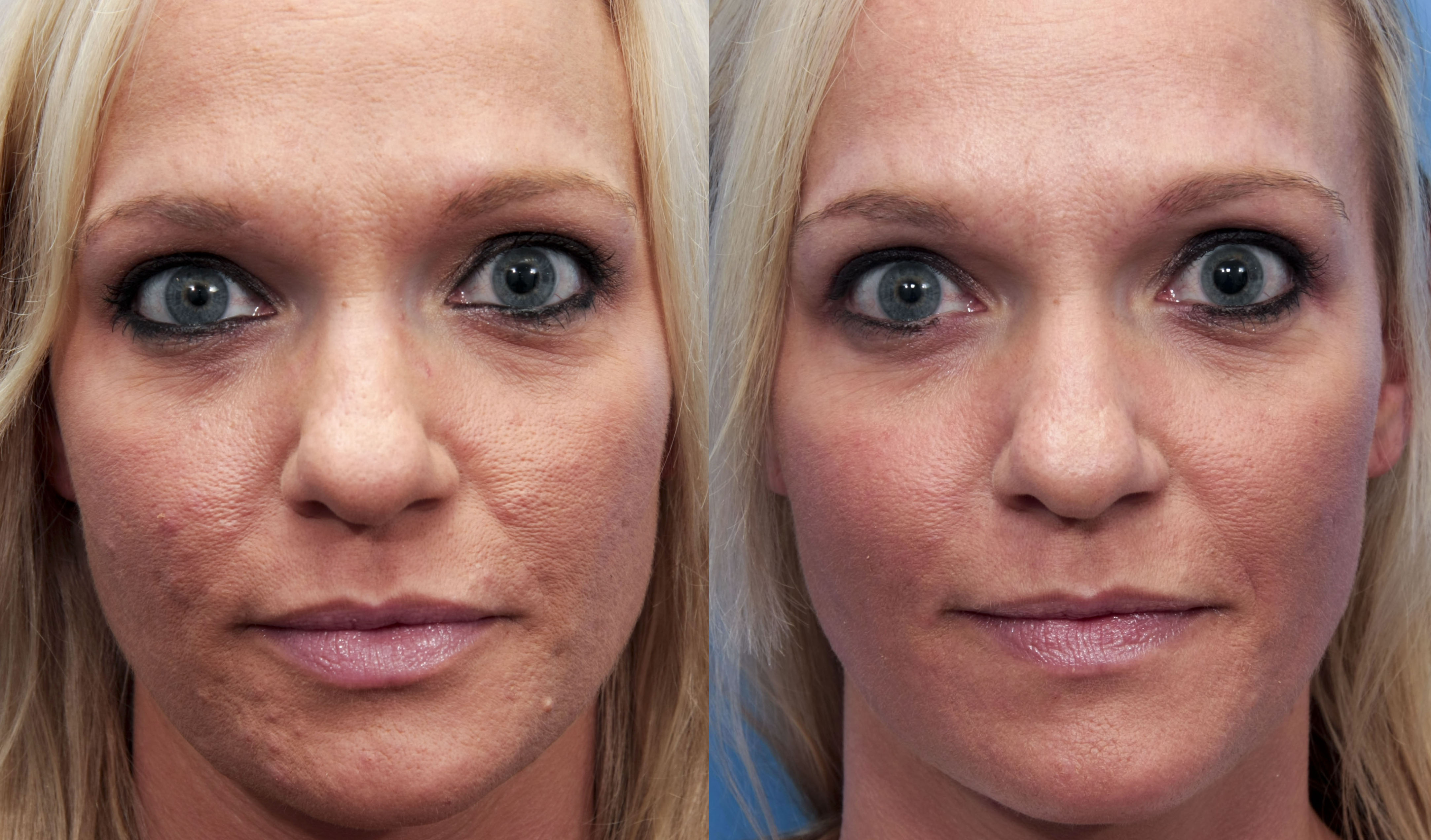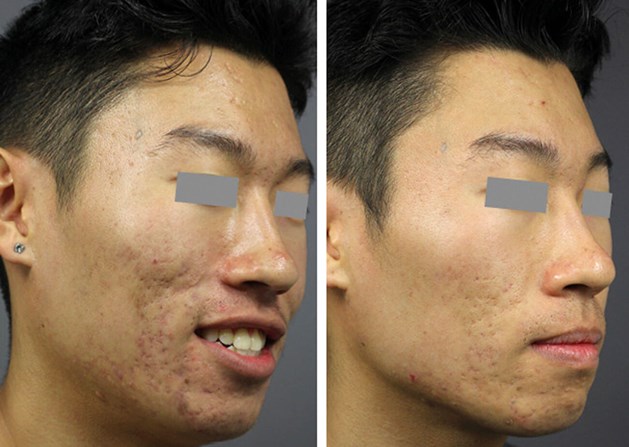Understanding the Various Skin Problem and Efficient Therapy Alternatives for Acne Scars
Acne marks stand for an intricate interaction of skin disease that substantially effect individuals' self-worth and total skin wellness. Recognizing the unique sorts of acne marks-- atrophic and hypertrophic-- together with their underlying causes, is pivotal for establishing reliable therapy approaches. Numerous restorative choices exist, ranging from sophisticated skin-related treatments to all-natural treatments. Nevertheless, the efficacy of these therapies usually depends upon tailored assessments by certified experts. As we discover the landscape of acne mark monitoring, it comes to be obvious that the journey towards clearer skin might involve greater than just topical services.
Types of Acne Marks
Acne scars can manifest in various types, each requiring specific treatment approaches. Both primary classifications of acne scars are hypertrophic and atrophic scars. Atrophic scars are characterized by a loss of cells, resulting in clinically depressed locations on the skin. These marks are more categorized into 3 subtypes: ice choice marks, which are deep and slim; boxcar marks, which are bigger and have distinct sides; and rolling scars, which create a wave-like appearance because of uneven skin appearance.
In contrast, hypertrophic scars result from an overflow of collagen throughout the healing process, causing raised areas on the skin. These scars are frequently strong and can differ in shade, sometimes appearing red or darker than the bordering skin.

Causes of Acne Scarring
Marking occurs as a result of the body's all-natural healing feedback to inflammation and injury triggered by acne lesions. When acne types, it triggers an inflammatory response, leading to the launch of numerous cytokines and development aspects that advertise healing. This process can sometimes lead to excessive tissue development or insufficient repair service, resulting in marks.
The main sources of acne scarring include the extent of the acne itself, duration of the sores, and individual skin kinds. Severe inflammatory acne, such as cysts and blemishes, is more probable to lead to scarring due to deeper cells damages. Furthermore, improper handling of acne sores, such as squeezing or picking, can exacerbate tissue injury and swelling, enhancing the likelihood of scarring.
Genetic proneness additionally plays a significant duty; people with a family history of scarring are at a higher danger. Skin kind and shade can affect mark formation, as darker skin tones may experience post-inflammatory hyperpigmentation, while lighter skin may establish atrophic scars.

Therapy Options for Scarring
Efficient treatment alternatives for acne scarring vary depending upon the kind and extent of the marks. Typically categorized right into atrophic, hypertrophic, and keloid marks, these problems require customized methods for optimal results.
For atrophic marks, which are characterized by a loss of tissue, therapies such as chemical peels, microdermabrasion, and laser treatment are typically utilized. These techniques promote skin renewal and boost collagen production, thus improving skin structure. Subcision, a minimally invasive procedure, can also work by breaking up fibrous bands underneath the skin.
Hypertrophic and keloid marks can be more testing to treat. Alternatives include corticosteroid injections to minimize inflammation and squash the scars. acne and acne scars treatment. In many cases, cryotherapy or laser therapy may be advised to decrease their look
Surgical options are available for severe scarring, where excision or skin grafting might be required. It's crucial for people to seek advice from a skin specialist to assess their particular mark type and talk about the most suitable therapy strategy. Combining multiple treatments often generates the very best results, making certain that each patient's unique skin condition is addressed successfully.
Natural Remedy and All-natural Solutions
All-natural remedies and natural home remedy can give an available technique for individuals seeking to enhance the look of acne scars. Various components located in the home cooking area have actually shown prospective advantages in enhancing skin appearance and promoting healing.
One popular remedy is aloe vera, known for its relaxing and anti-inflammatory residential properties. Using fresh aloe vera gel straight onto the marks can aid boost skin hydration and lower soreness. Likewise, honey possesses all-natural anti-bacterial and moisturizing top qualities that can help in scar recovery. It can be made use of as a mask, left on for half an hour before rinsing.
Another efficient alternative is lemon juice, which serves as an all-natural exfoliant and can lighten hyperpigmentation. Nevertheless, it should be made use of very carefully, as it might trigger photosensitivity. Oatmeal masks are likewise valuable; their mild exfoliation can help get rid of dead skin cells while relaxing inflammation.
Vital oils, such as tea tree oil and lavender oil, can even more sustain mark healing as a result of their antimicrobial buildings. It is essential to do a patch test prior to using any kind of remedy to guarantee there are no damaging reactions. These natural services can be a corresponding strategy in the trip to lessen acne scars.
Stopping Future Scarring
Embracing a positive approach to skin care can substantially minimize the threat of establishing future acne marks. One of the crucial methods is to take care of acne efficiently as it occurs (acne and acne scars treatment). This includes using non-comedogenic skincare items and drugs prescribed by skin doctors that target acne without aggravating the skin. Regular cleansing, peeling, and hydration can help keep skin health and protect against clogged up pores.
Additionally, staying clear of the temptation to pick or press acne lesions is essential, as this can result in swelling and subsequent scarring. Rather, individuals need to concentrate on applying topical therapies that advertise recovery and decrease inflammation. Active ingredients such as salicylic acid, benzoyl peroxide, and retinoids are known for their efficiency in handling acne and decreasing marks.

Finally, keeping a healthy and balanced click resources diet rich in anti-oxidants and remaining hydrated supports skin regeneration. By carrying out these preventative measures, individuals can substantially decrease their danger of future scarring and promote general skin wellness.
Conclusion
In final thought, an extensive understanding of acne scars, incorporating both hypertrophic and weblink atrophic types, is crucial for efficient therapy strategies. Assessment with a skin doctor remains necessary to develop individualized strategies that consider private skin kinds and mark severity, eventually boosting the efficacy of scar administration strategies.
Acne marks represent a complex interplay of skin conditions that dramatically effect individuals' self-confidence and overall skin wellness. The two primary categories of acne scars are atrophic and hypertrophic scars. These marks are additional identified into 3 subtypes: ice pick marks, which are slim and deep; boxcar scars, which are broader and have distinct edges; and rolling marks, which create a wave-like look due to uneven skin structure.
A comprehensive appointment with a skin specialist can aid identify the most ideal intervention, taking he has a good point into account the person's skin type, scar intensity, and overall skin health and wellness.
Appointment with a dermatologist stays imperative to develop tailored approaches that think about specific skin kinds and scar seriousness, inevitably boosting the efficacy of scar administration strategies.